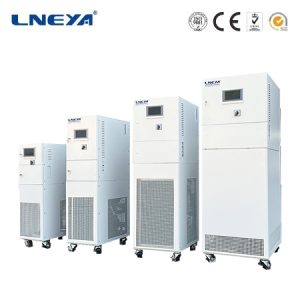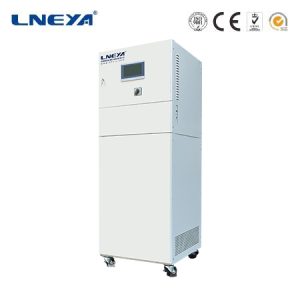Which process in semiconductor manufacturing requires a multi-channel chiller? Why is it necessary?
In the semiconductor manufacturing process, multi-channel chillers are mainly used in key process links that require high-precision temperature control and large-scale heat management.
Here are some typical usage scenarios and reasons:
Chemical Vapor Deposition (CVD): In the CVD process, a multi-channel chiller is used to cool the reaction chamber walls, heat exchangers, and gas preheating exchangers to maintain stable reaction chamber temperature, ensuring precise control of film thickness, uniformity, and chemical reactions.
Etching and etching: Both dry etching and wet etching require precise temperature control. The multi-channel chiller ensures the temperature of the etching equipment and chemical bath, which affects the etching rate, selection ratio, and graphic accuracy.
Ion implantation: The ion source and target chamber need to be cooled by a chiller to control temperature, prevent overheating from affecting ion energy dispersion, and ensure the accuracy of injection depth and dosage.
Heat treatment: such as oxidation, diffusion, annealing, nitriding, multi-channel chiller controls furnace temperature to ensure uniform temperature, affecting diffusion rate, activation, and impurity distribution.
Testing equipment: such as probe testing and aging testing benches, multi-channel chillers control the testing environment temperature to ensure equipment stability and reproducibility of test results, especially for high or low temperature testing.
Why do need a multi-channel chiller?
Temperature control accuracy: Multi channel design can more accurately control the temperature of each area, reduce temperature fluctuations, and ensure process consistency.
High heat load management: Semiconductor manufacturing generates a large amount of heat energy, and multi-channel can effectively handle a large amount of heat load to ensure equipment operation safety and efficiency.
Flexibility: Multiple channels can be independently adjusted to meet specific temperature requirements of different processes or equipment sections, increasing process flexibility.
Reliability: Redundant hot backup, single channel failure does not affect overall operation, improves system stability, and reduces downtime.
In summary, the application of multi-channel chillers in semiconductor manufacturing is based on high requirements for temperature control accuracy, thermal energy management, production efficiency, and process stability, ensuring the performance and yield of semiconductor devices.
Related recommendations
-
Does the chip lead bonding process require a temperature control system?
1313The chip lead bonding process indeed requires precise temperature control, so temperature control systems are usually equipped to ensure process stability and yield. The following are the importance and application scenarios of temperature con...
View details -
FLT-100℃~90℃
3363Single channel air-cooled cooler, mainly designed for etching machines. It is used to provide independent temperature control for the chamber sid...
View details -
FLT -45℃~40℃
2363Model FLT-402 FLT-402W FLT-403 FLT-403W FLT-404 FLT-404W FLT-406 FLT-406W FLT-408 FLT-408W FLT-410 FLT-410W FLT-415 FLT-415W Temp Control -45℃~40℃ Temp control accuracy ±0.1℃ Flow Control 10~25L/min 5bar max 15~45L/m...
View details -
Temperature control and chillers in oxidation diffusion process
1231The oxidation diffusion process is a key step in semiconductor manufacturing. It is mainly used to form precise oxide layers and doping, and has extremely strict requirements for temperature control. In this process, the chiller, as an imp...
View details
 LNEYA Industrial Chillers Manufacturer Supplier
LNEYA Industrial Chillers Manufacturer Supplier












